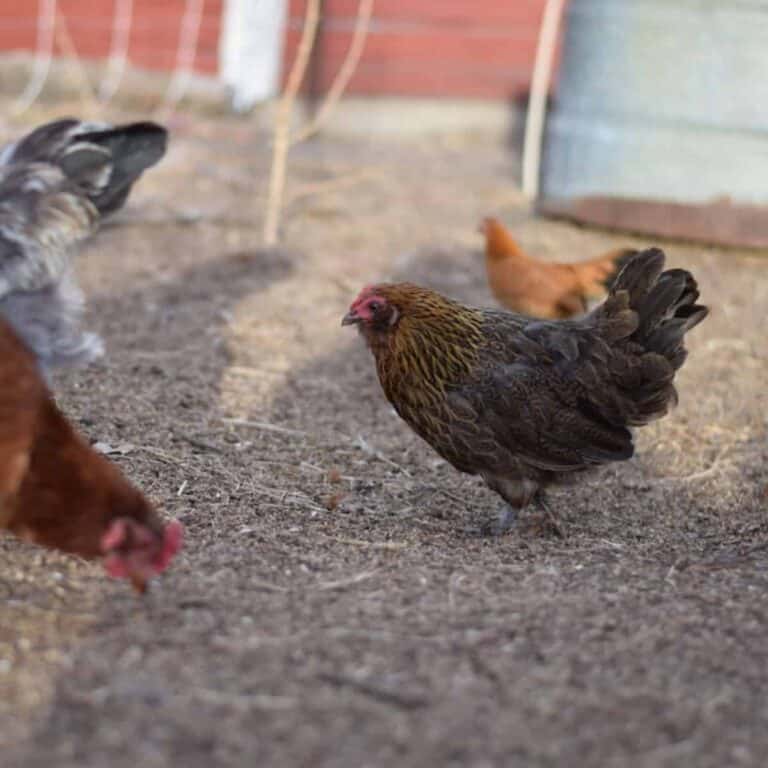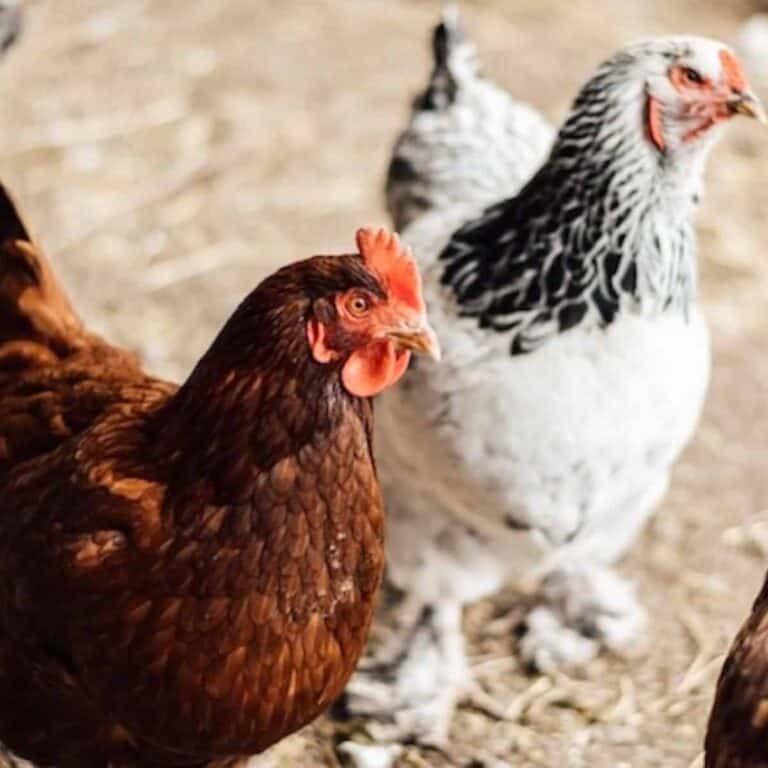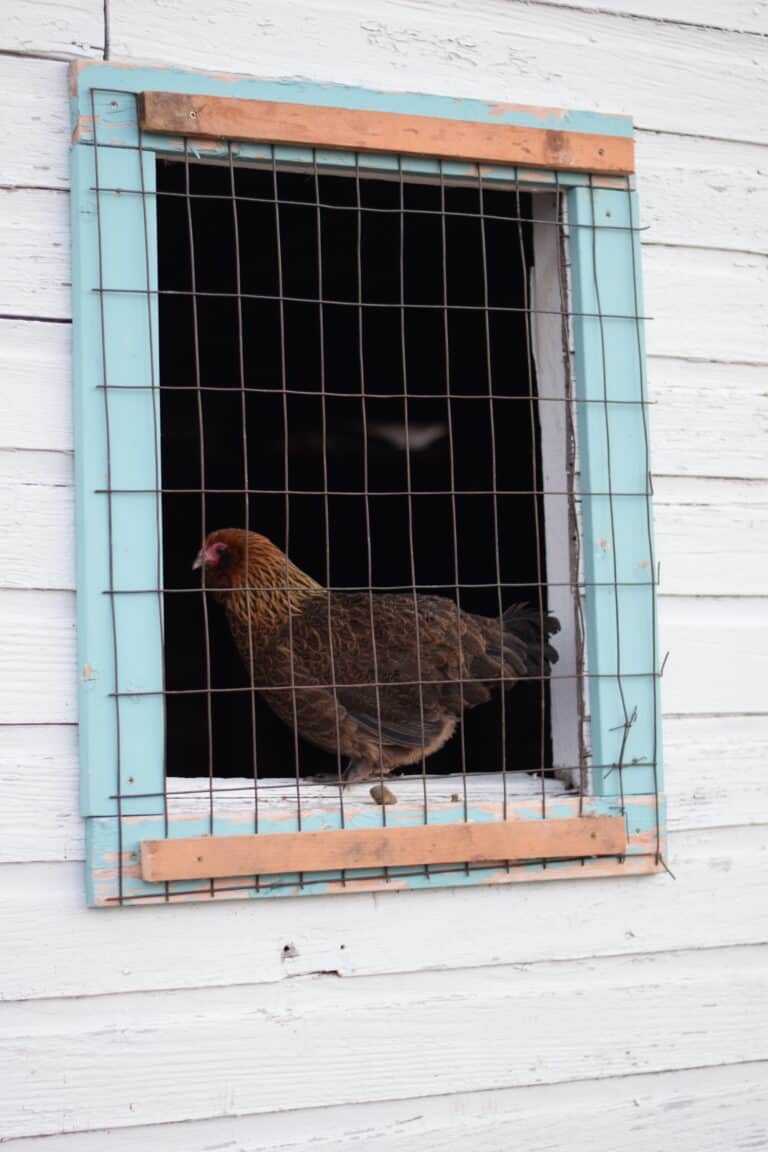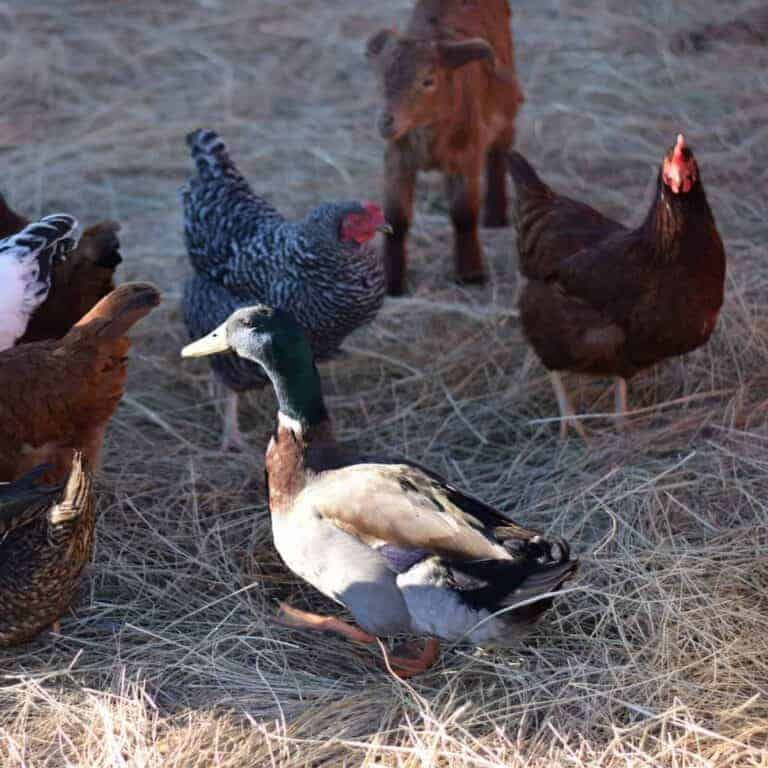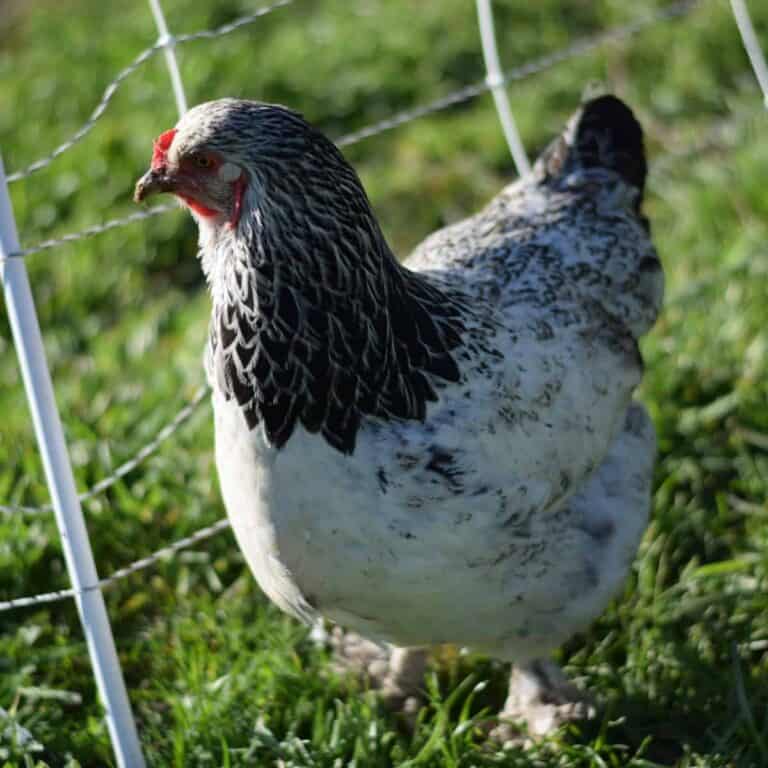Ultimate Guide to Raising Bottle-Fed Goats on the Homestead
Raising bottle-fed goats, often called “bottle babies,” can be an incredibly rewarding experience and addition to your homestead. Each situation is unique, but there may be times where your goats will require additional care.
Bottle-feeding is often necessary for orphans or weak kids that need extra attention. And this guide covers everything you need to know to raise happy, healthy bottle-fed goats on your homestead.
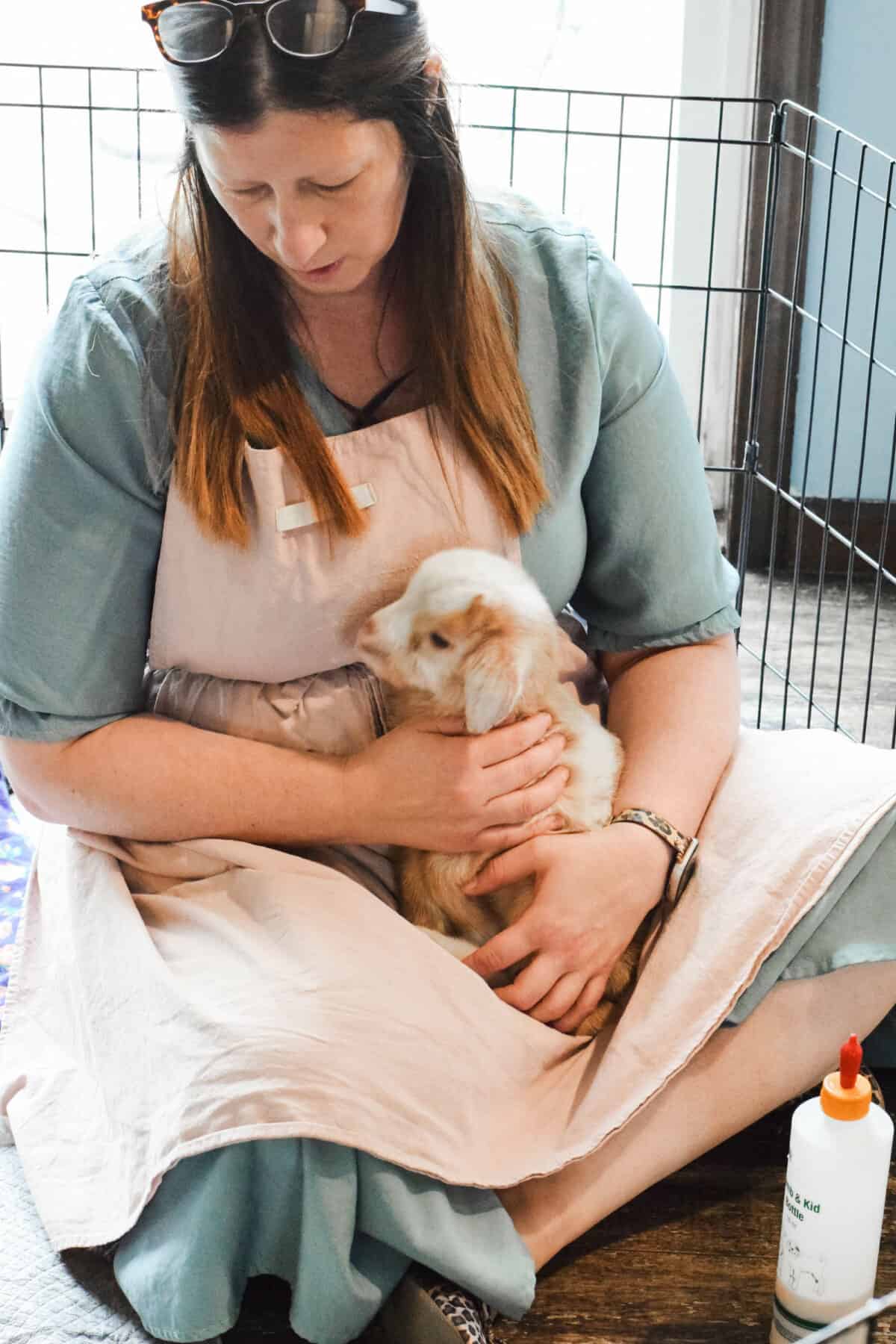
Raising Bottle-Fed Goats
Over the years, we’ve had several different situations with our homestead animals that requires additional care. And in this post, I’m sharing what we’ve learned along the way with raising bottle fed goats.
We are currently in kidding season with our goats and one of little ones has become a bottle goat. This means that we have needed to separate her from the other goats and provide with additional love & care.
Her mother had twins and decided to care for her sister only. So she was rejected by her mother and left alone in the cold early one morning. My husband scooped her up and brought her inside for us to nurse her back to health.
It’s a sad situation, but not uncommon when raising goats.
Whether you’re raising a bottle goat due to orphaned kids, a doe unable to nurse, or simply to create a closer bond with your goats, bottle-feeding requires dedication and knowledge to ensure the health and well-being of your baby goats.
Essential Supplies for Bottle-Feeding
Milk Source: Fresh goat’s milk is ideal, but high-quality goat kid milk replacer works well too. Avoid cow’s milk replacers. Several times during the day, we will go out and milk the mama to feed the baby with.
Newborns must receive colostrum (the first milk) within the first 12-24 hours of life to build their immune systems. If the mother is unavailable, use a colostrum replacer.
Depending on the situation, you may not have access to the mama for milking. Your local feed store should have milk replacer in stock. Here is a good option online.
Bottles and Nipples: Pritchard nipples attached to old water or soda bottles or baby bottles with slow-flow nipples are commonly used. Personally, I prefer these bottles for feeding baby goats. Keep bottles and nipples clean to prevent illness.
Pro tip: Keep a backup supply of milk replacer and extra nipples on hand during kidding season.
Feeding Schedule and Technique
Proper feeding is critical for the health and growth of your goat kids. Below is a general feeding schedule:
Birth to 2 Weeks
- Feed colostrum in the first 12-24 hours.
- Feed goat’s milk or milk replacer 4-5 times daily.
- 4-6 ounces per feeding.
- Use warm milk at each feeding.
2 to 4 Weeks
- Feed 3-4 times daily.
- Increase to 6-8 ounces per feeding.
4 to 8 Weeks
- Feed 3 times daily.
- Increase to 8-12 ounces per feeding.
8 to 12 Weeks
- Gradually reduce feedings to twice a day as the goat begins eating more solid food.
During this transition, monitor their behavior and health closely to ensure they’re thriving.
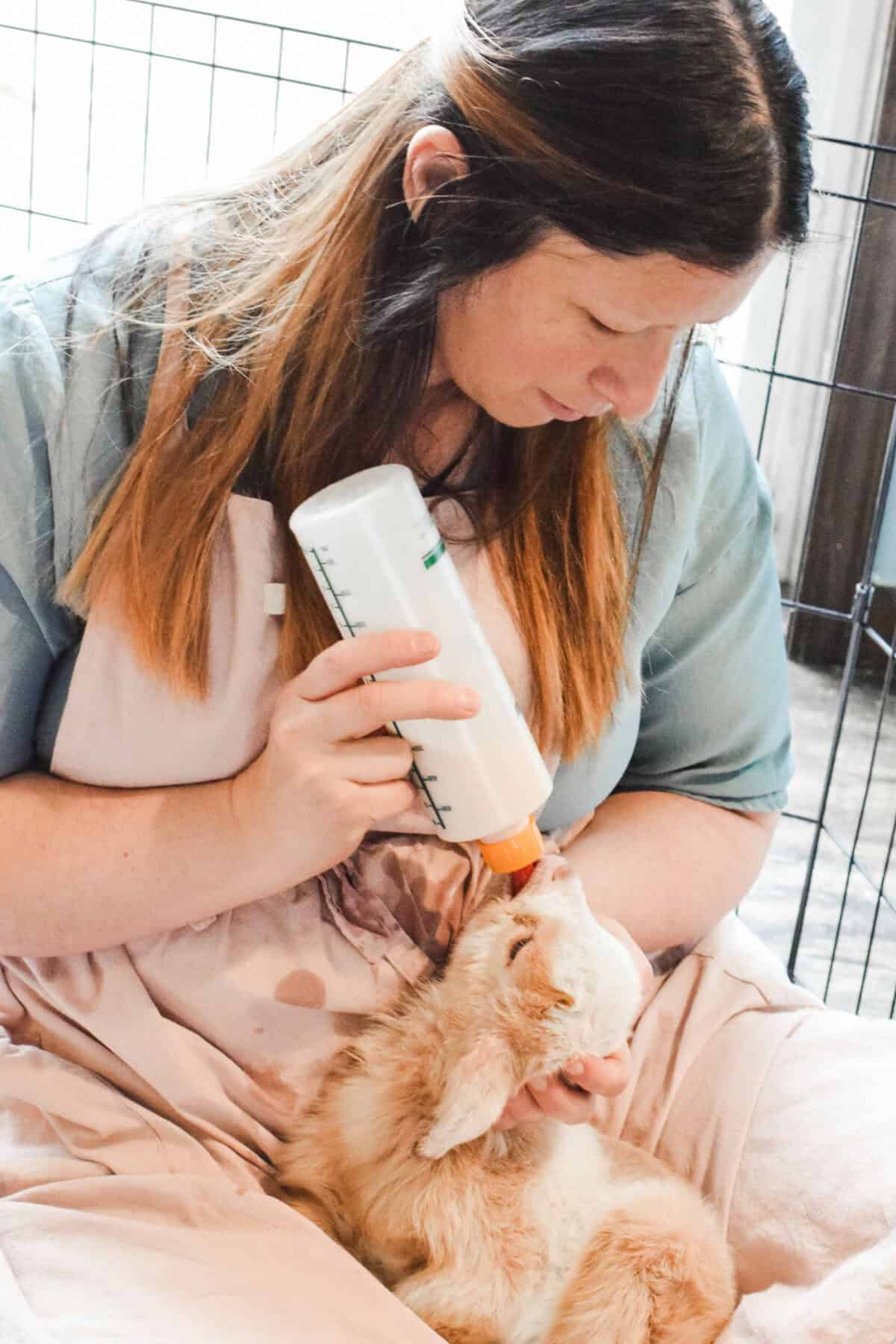
Want to save this?
Tips for Feeding:
- Always feed milk at a warm temperature (100-102°F).
- Hold the bottle at an angle similar to how a kid would nurse from its mother.
- Avoid overfeeding—goats have sensitive stomachs, and overfeeding can lead to digestive issues like scours.
Start introducing solid food around 2-3 weeks of age:
- Hay: Provide high-quality alfalfa or grass hay in small amounts.
- Grain: Offer a goat kid starter grain or creep feed in a shallow dish.
- Water: Ensure fresh, clean water is available at all times.
By 8-12 weeks, kids should be eating enough solid food to wean off the bottle completely.
Health & Wellness
Keeping bottle-fed goats healthy requires attention to their environment and care. Provide a clean, warm. and draft-free space with bedding like straw or hay.
We’ve had to bring the kids inside the house for care while they are newborns because of the cold weather.
We just set up a simple dog indoor playpen and lay out puppy potty training pads on the floor.
But, generally in outside conditions, ensure that the goat’s shelter is kept warm and clean.
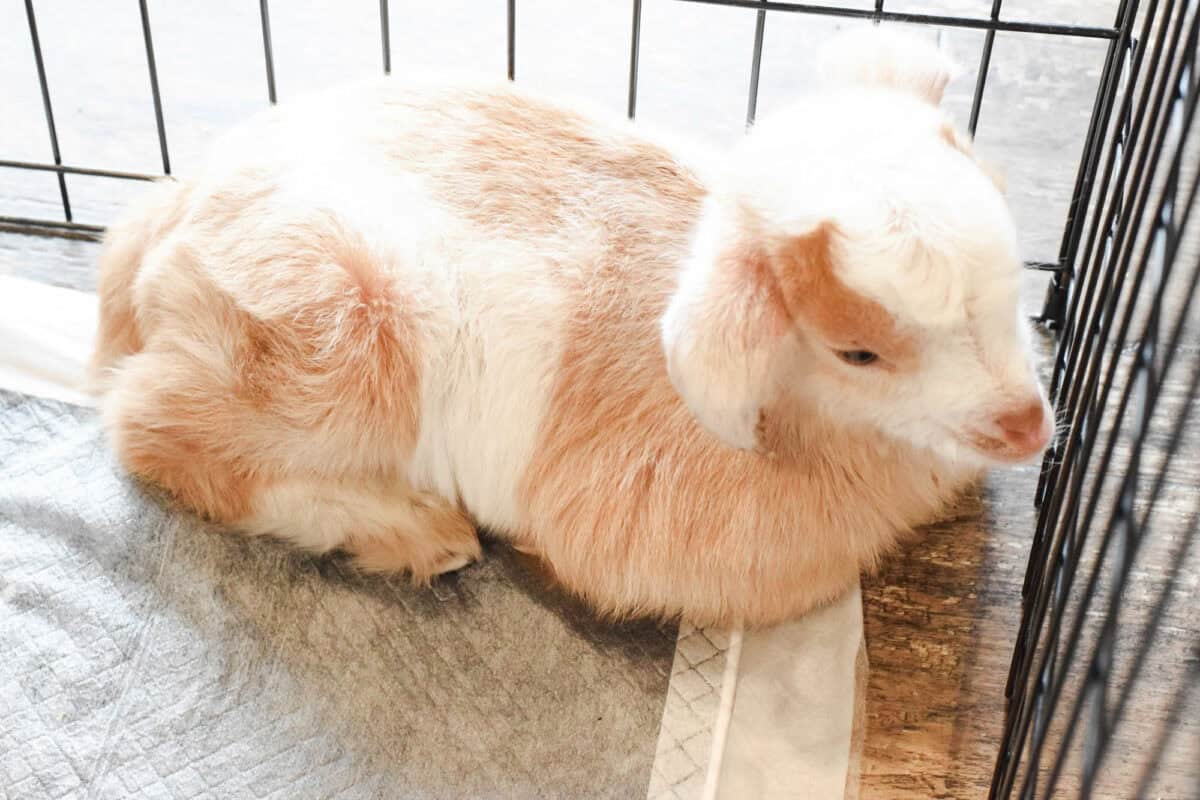
Preventing Scours
- Scours (diarrhea) is a common issue caused by overfeeding, improper milk temperature, or infections.
- Treat scours promptly by adjusting feeding practices and providing electrolytes if necessary.
General Care
- Monitor weight gain and growth.
- Provide a clean, warm shelter with proper ventilation.
- Spend time socializing your goats to build trust and ensure they are comfortable with handling.
Common Challenges and Solutions
- Refusal to Take the Bottle: Warm the milk slightly more or try a different type of nipple.
- Overfeeding: Stick to the schedule and measure milk carefully.
- Cold Stress: Keep kids warm with heat lamps or blankets, especially in winter.
- Loneliness: Goats are herd animals. If possible, raise at least two bottle babies together.
Raising Bottle-Fed Goats that are Happy & Healthy
Bottle-feeding requires effort, but the rewards are worth it. These goats often grow into friendly, social members of your herd. With proper care, they will thrive and bring joy to your homestead.
Remember, patience and consistency are key. Every feeding, cuddle, and step in their growth strengthens the bond between you and your goats.
More About Raising Goats
If you’re new to raising goats, I have resources for you to aid in your journey.
Are you raising bottle-fed goats? Share your experiences or tips in the comments below!

